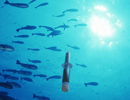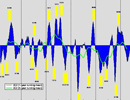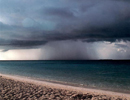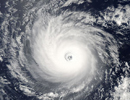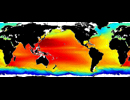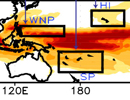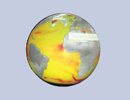Hawaii Regional Ocean Model
This model extends the capability of a Global Ocean Data Assimilation Experiment (GODAE) model for the Hawaii region.
The development of a regional ocean model for the waters surrounding the Hawaiian Islands at the IPRC is an extension of the effort by the multi-institutional HYCOM Consortium. The consortium is sponsored by the National Ocean Partnership Program (NOPP) as part of the U. S. Global Ocean Data Assimilation Experiment (GODAE) to develop and evaluate a data-assimilative hybrid isopycnal-sigma-pressure (generalized) coordinate ocean model (called Hybrid Coordinate Ocean Model or HYCOM). One of the objectives of GODAE is depiction of the three-dimensional ocean state at fine resolution in real time on a global scale. Such a system is currently run operationally in forecast mode, from which the results are available to the community at large through designated data servers, including the HYCOM Consortium’s own data server and the APDRC server at the IPRC.
The HYCOM consortium is also working together with coastal modeling groups in evaluating the model output from the prediction system and using the results as boundary conditions for even higher resolution regional models, thus extending the capability of the prediction system to near-shore areas where human activities are most concentrated.
Researchers at the IPRC with the support of a NOAA grant and in collaboration with scientists at the Naval Research Laboratory at Stennis Space Center and Center for Ocean-Atmospheric Prediction Studies of Florida State University (members of the HYCOM Consortium) implemented HYCOM for the waters surrounding the Hawaiian Islands.
In the first step of downscaling, the Hawaii regional HYCOM has a horizontal resolution of 0.04°.
Fig. 1 depicts snap shots of model variables from a simulation in which the lateral boundary conditions are supplied by the 0.08° prediction system of the HYCOM Consortium and the surface wind stress and thermal fluxes are products of a regional atmospheric prediction system at 6 km (approximately 0.056°) based on the Weather Research and Forecasting (WRF) system. Preliminary analysis of the model results from this simulation shows many aspects of the observed circulation characteristics in this region. In particular, we see an abundance of eddies, both cyclonic and anti-cyclonic west of the island chain.
For the latest results from the regional model, see:

